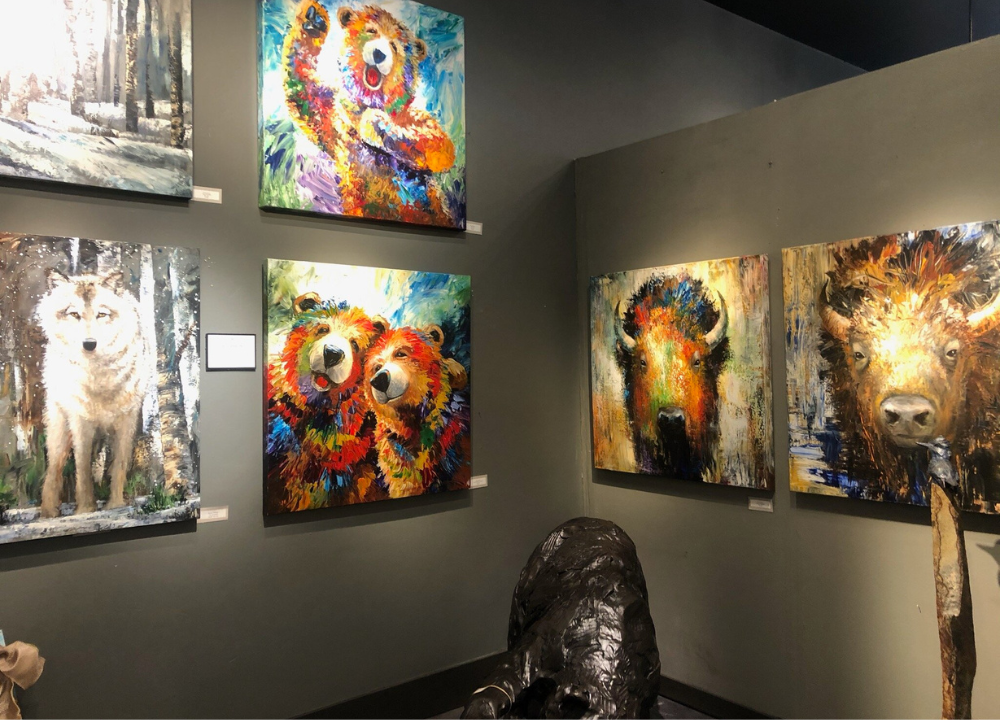This practical training guide will help you turn those moments of admiration into creative practice. You’ll discover simple techniques and effective tips that make sketching less intimidating and more enjoyable. By the end, you’ll feel confident picking up your pencil and bringing your own artistic vision to life—right there among masterpieces.
Benefits Of Sketching In Museums
Sketching helps you see details that you might miss at first glance. It trains your eyes and hands to work together. This practice deepens your understanding of the artwork and the artist’s technique. Spending time sketching in a museum also creates a quiet moment to focus and reflect. It makes the experience more personal and meaningful.
Enhancing Observation Skills
Sketching in a museum helps improve your observation skills in many ways. It forces you to look closely at shapes, lines, and colors. This careful study trains your brain to notice small details. You learn to see beyond the surface and understand the structure of objects.
- Focus on details: Sketching slows you down and makes you observe every part carefully.
- Understand proportions: You practice measuring the size and position of elements in the artwork.
- Improve memory: Drawing from observation helps your brain remember shapes and forms better.
Here is a simple table showing how sketching improves different observation skills:
| Skill | How Sketching Helps |
|---|---|
| Attention to Detail | Focus on small shapes and textures |
| Spatial Awareness | Understand the position of elements |
| Visual Memory | Recall shapes and colors from memory |
Regular practice in museums trains your eyes to see like an artist. It builds patience and sharpens your visual perception. This skill is useful not only in art but also in everyday life.
Connecting With Artworks
Sketching in museums creates a deep connection with the artworks. It makes you slow down and spend time with each piece. This personal engagement helps you feel the emotions and ideas behind the art.
- Experience the process: Drawing helps you understand how the artist created the piece.
- Feel the texture: You notice brush strokes, lines, and shading techniques.
- Interpret meaning: Spending time with the artwork helps you think about its story and message.
Sketching also allows you to express your own view of the artwork. It becomes a form of conversation between you and the artist. This interaction can inspire creativity and new ideas.
Here are key ways sketching connects you with art:
- Builds appreciation for artistic skill
- Enhances emotional response
- Encourages mindfulness and presence
- Promotes creative thinking
In a busy museum, sketching creates a quiet space for reflection. It turns viewing into an active and personal experience. This connection deepens your love for art and makes learning more enjoyable.
Essential Materials For Museum Sketching
Essential materials for museum sketching include a good sketchbook and reliable pencils or pens. These tools help capture details quickly and accurately. Choosing them wisely supports creativity and comfort during your visits.
Choosing The Right Sketchbook
A sketchbook is your main tool for museum sketching. Pick one that fits your style and needs. Size matters. A smaller sketchbook (around A5 or 5.8 x 8.3 inches) is easy to carry and use in crowded spaces. Larger sketchbooks offer more room but can be heavy and less convenient.
Paper quality is very important. Look for thick, smooth paper that can handle different pencils and pens without bleeding or tearing. A paper weight of 100gsm or higher works well. Some artists prefer textured paper for added effect.
Binding type affects comfort. Spiral-bound sketchbooks lie flat, making sketching easier. Hardbound sketchbooks are more durable and protect your work better.
| Feature | Why It Matters | Recommendation |
|---|---|---|
| Size | Easy to carry and use | A5 (5.8 x 8.3 inches) or similar |
| Paper Quality | Prevents bleed-through and tears | 100gsm or higher, smooth or lightly textured |
| Binding | Comfort and durability | Spiral for flatness, hardbound for protection |
Extra tip: Keep a sketchbook with plain pages for freedom and mixed media use. Avoid lined or grid pages, which can distract from your drawing.
Selecting Pencils And Pens
Good pencils and pens allow quick, clear sketches in museums. Pencils offer control and shading options. Pens create bold lines and lasting marks. Many artists use both types together.
Choose pencils with a range of hardness. Soft pencils (B, 2B, 4B) create dark, smooth lines. Hard pencils (H, 2H) make light, fine lines. Start with a 2B pencil for general sketching.
Mechanical pencils provide consistent lines and do not need sharpening. They are perfect for detailed work.
Here is a simple guide:
- Graphite pencils: 2H to 6B for varied shading and lines.
- Mechanical pencils: 0.5mm or 0.7mm for precision.
- Fine liners: Multiple nib sizes, waterproof ink preferred.
- Erasers: Kneaded for gentle corrections, standard for removing marks.
Pens add contrast and permanence. Fine liners with different nib sizes (0.1mm to 0.5mm) suit detailed or bold sketches. Waterproof ink pens prevent smudging.
Preparing For Your Museum Visit
Learning to sketch in museums brings art to life. It helps you see details and shapes clearly. Preparing for your museum visit improves your sketching experience. It saves time and makes your practice more focused. Good preparation means you can enjoy the art and practice your skills well.
Researching Exhibits
Before visiting, find out about the museum’s exhibits. Check the museum website or brochures for current displays. Choose exhibits that interest you or match your sketching goals. Knowing the art styles or themes helps you prepare your materials and mindset.
Look for:
- Types of art (paintings, sculptures, drawings)
- Famous artists featured
- Special collections or temporary exhibits
- Exhibit size and layout
For example, a museum might have a classic painting exhibit and a modern art section. Each requires a different sketching approach. You might use softer pencils for detailed portraits or charcoal for bold abstract shapes.
| Exhibit Type | Sketching Focus | Recommended Tools |
|---|---|---|
| Portrait Paintings | Facial features, shadows | Graphite pencils, erasers |
| Sculptures | 3D shapes, textures | Charcoal, blending stumps |
| Abstract Art | Shapes, colors, lines | Colored pencils, markers |
Write down key info about the exhibits. This helps focus your sketching during the visit. It also allows you to prepare questions or ideas for later study.
Planning Your Sketching Sessions
Plan your time and tools before entering the museum. Decide how long you will spend sketching each piece or area. Divide your visit into smaller sessions to avoid feeling rushed or tired.
Tips for planning:
- Set clear goals for each session (practice faces, textures, or shapes).
- Pack a sketchbook, pencils, erasers, and a sharpener.
- Bring a portable stool or cushion for comfort.
- Allow breaks to rest eyes and hands.
- Check museum rules about sketching materials and photography.
Use a simple schedule like this:
| Time | Activity | Focus |
|---|---|---|
| 10:00–10:30 | Warm-up sketches | Quick shapes, lines |
| 10:30–11:15 | Detailed study | Portrait or sculpture |
| 11:15–11:30 | Break | Rest, observe |
| 11:30–12:00 | Color or style practice | Abstract or modern art |
Planning helps you stay organized and calm. You get the most out of your visit and improve your skills step by step.
Sketching Techniques For Museum Settings
Sketching techniques for museum settings help artists capture the essence of exhibits quickly and accurately. Museums often have time limits, crowds, and lighting challenges. Effective sketching methods allow artists to work efficiently without losing detail or creativity.
Quick Gesture Drawing
Quick gesture drawing focuses on capturing the basic form and movement of a subject in a short time. This technique suits museum visits where you must sketch fast due to crowds or limited time near an exhibit. The goal is not perfect detail but to record the main shapes and energy.
Follow these steps for quick gesture drawing:
- Use light, loose lines to outline the subject.
- Focus on the overall shape rather than small details.
- Draw fast to keep the flow and avoid stiffness.
- Repeat sketches to improve speed and observation.
Here is a simple table to compare quick gesture drawing with detailed sketching:
| Aspect | Quick Gesture Drawing | Detailed Sketching |
|---|---|---|
| Time Spent | 1-5 minutes | 20+ minutes |
| Line Style | Loose and flowing | Precise and controlled |
| Focus | Overall shape and movement | Fine details and textures |
| Best Use | Live subjects, quick studies | Still objects, portraits |
Practice quick gestures to warm up your hand and eye. This technique helps capture the life and energy of sculptures, paintings, or people in museums.
Capturing Details And Textures
After mastering quick sketches, focus on capturing details and textures. These elements bring your museum sketches to life. Details like cracks in a sculpture or brush strokes in a painting add depth and realism.
Use these tips to capture details and textures effectively:
- Observe closely: Spend time studying the surface, patterns, and lighting.
- Use varied line weights: Thicker lines show shadows; thin lines show fine textures.
- Apply shading techniques: Cross-hatching, stippling, and smooth shading create texture.
- Work slowly: Focus on one small area at a time.
- Use different pencils or pens: Hard pencils for fine lines; soft pencils for shading.
The table below shows common textures and suggested sketching methods:
| Texture | Sketching Method |
|---|---|
| Rough stone | Stippling and short, jagged lines |
| Smooth skin | Light shading with soft pencil |
| Wood grain | Parallel lines and varied pressure |
| Fabric folds | Cross-hatching and contour lines |
Capturing details demands patience and attention. Use sketching to explore the textures and bring your museum subjects into sharper focus.
Managing Time And Focus
Managing time and focus during these sessions is crucial to make the most of every visit. Museums can be busy, with many things competing for your attention. Effective time management helps you capture important details without feeling rushed.
Balancing Observation And Drawing
Good sketches start with careful observation. Spend time looking closely at the subject before putting pencil to paper. This helps you understand shapes, lines, and shadows better. Avoid rushing into drawing immediately.
- Step 1: Observe for 3-5 minutes. Notice details like texture, light, and proportions.
- Step 2: Sketch basic shapes lightly. Focus on the overall structure first.
- Step 3: Add details gradually. Work from large to small elements.
Here is a simple time breakdown to balance observation and drawing during a 20-minute sketch:
| Activity | Time | Purpose |
|---|---|---|
| Observation | 5 minutes | Study subject carefully |
| Basic Sketch | 7 minutes | Draw main shapes lightly |
| Details | 8 minutes | Add finer lines and shading |
Balancing observation and drawing keeps your work accurate and expressive. It prevents mistakes caused by rushing. Use a timer or watch to keep track of time. This will improve your efficiency and skill.
Dealing With Crowds And Distractions
Museums can be noisy and crowded. These distractions can break your focus and slow your progress. Learning to manage the environment is part of practical training.
Try these tips to minimize distractions:
- Choose quiet times: Visit during weekdays or early hours.
- Find less crowded spots: Move to corners or smaller rooms.
- Use noise-cancelling headphones: Listen to soft music or white noise.
- Set clear goals: Focus on one subject per session.
- Take short breaks: Step away briefly to relax your mind.
Accept that some distractions are unavoidable. Practice staying calm and returning focus quickly. With experience, sketching in busy museums will feel easier and more enjoyable.




